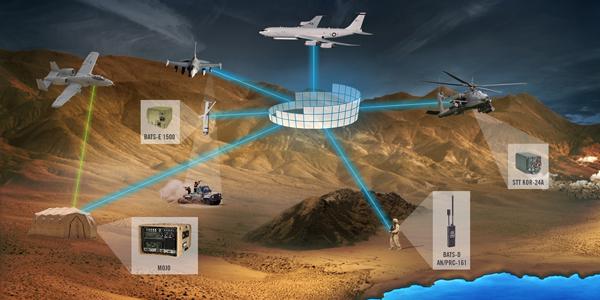Link 16 Hits the Ground Running
Communications requirements are changing in tandem with new modes of military battlefield requirements. Until a few years ago, voice had been the predominant communications medium. Variable message format messages were adopted as the digitally aided close air support standard, however even with a concerted effort by the U.S. Defense Department to standardize requirements, there continues to be longstanding issues with interoperability, including significant loss of key data and slow refresh rates.
Today’s Link 16 networks typically support theaterwide engagements with situational awareness, command and control, and information exchange requirements (IERs) across the entire area of operations. It is this flexibility to meet the changing operational needs of the battlefield that has maintained its viability over the past 40 years.
The adoption of capability in so many emerging use cases is not accidental. It reflects the Link 16 community’s evolving understanding of the modern battlefield.
For instance, air-to-ground operations are being looked at in an entirely new way and opening up more uses for Link 16 with the latest enhancements that address the needs of warfighters on the ground. Unlike a pilot who can see or communicate with other aircraft up to hundreds of miles away, the Earth’s curvature and the local terrain limit dismounted ground forces’ ability to communicate. The distance and speed at which they maneuver impacts their IERs, including how often their position must be updated.
Dismounted ground operations are the new frontier for the next generation of Link 16 systems. Unlike their larger airborne and naval predecessors, these nodes spend more of their time receiving transmissions from other platforms such as aircraft than transmitting themselves.
One of the challenges for operating in a ground or ground-to-air environment is signal clutter and interference. However, the particular band that Link 16 radios use is not cluttered with other battlefield users and is occupied by civilian air traffic navigation systems.
In addition, the inherent security characteristics of Link 16 can help with localized IERs. The anti-jamming frequency-hopping patterns, called Net Numbers, that Link 16 terminals use can be selected and employed to keep IERs separated, enabling the capability to support up to 127 separate nets.
The terminals also secure the information being transmitted. Different cryptographic keys and partitioned variable modes can isolate data while allowing for range extending relay. Timeslot reassignment pools can be designed to adapt to usage requirements, while contention pools can be employed for an information span that is geographically smaller.
While some experts believe Link 16 networks are oversubscribed, and this is often true for the theaterwide net, there are more than 100 available frequency pattern nets that typically are completely open. Further, like cellular or satellite communications systems, bandwidth can be divided and shared across a theater.
As a result, a small ground unit can set up using a frequency pattern for its communications or Link 16 system. Tens of miles away, another unit can set up its net, and the two nets will not interfere with each other. This is one network management option the U.S. Defense Department is now examining to support ground communications during operations.
The new capabilities that are being delivered by the next generation of Link 16 terminals, combined with the expansion of Link 16 into new domains, allow Link 16 to be available for integration into new types of platforms and nodes that will be entering service in the coming years. The tactical data link, which demonstrated its flexibility to meet the changing operational needs of the battlefield, is now directly in the hands of warfighters at the tactical edge.
More details about next-generation Link 16 terminals are available in the SIGNAL Resource Library.



Comments